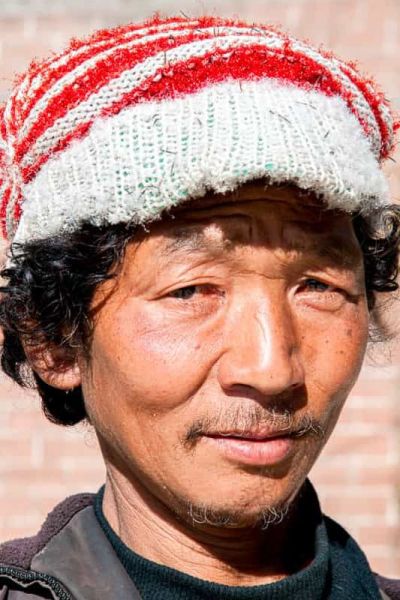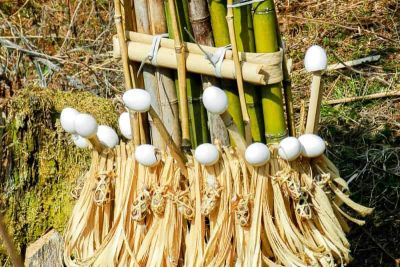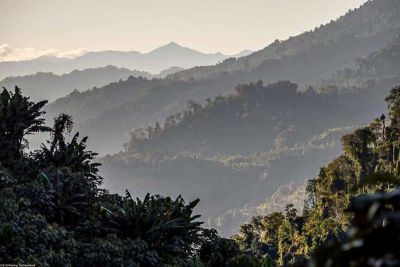History, peoples and environment of Arunachal Pradesh
History
The majority of the indigenous peoples living in Arunachal Pradesh were without writing until the 20th century, so that numerous archaeological finds are the only evidence of the rich cultural heritage and point to a very early settlement of the fertile valleys. For a long time, the region was spared from the territorial disputes of surrounding states, only coming under the control of the Tibetan Gelugpa school in the late 17th century and finally being ruled from Lhasa.
After the British invaded Tibet, they controlled the region and their rule was established in the treaty of the Shimla Conference in 1914, which was not recognized by China. The British subsequently turned the area into a federal state-like territory, which was, however, almost impossible to control due to its inaccessibility and the almost 100 tribes living in isolation. After India’s independence in 1947, the government of the young republic once again attempted to officially integrate the area.
As a result, an open war broke out with China in the border region in 1962, during the course of which Chinese troops advanced as far as the Assam Plain, but then withdrew again. In 1972, the region was granted Union Territory status by India, and Arunachal Pradesh has officially been an independent Indian state since February 20, 1987. The border is still not recognized by China.
Peoples and religions
The inaccessible landscape of Arunachal Pradesh has given rise to a thriving culture of diverse peoples with individual traditions. A total of around 1.4 million people live in the state, around 35% of the population are immigrants from Bangladesh, Chakma, Assam and Nagaland. The original tribal population consists of 25 different main tribes, each with over 5,000 members, and around 75 smaller tribes. The majority of this population has Tibetan or Thai-Burmese roots. In the far north and west live the Monpa and Sherdukpen, important tribal peoples who are closely related to the Tibetans. The Sherdukpen people live south of the Bomdila mountain range in the Tengapani valleys and are similar to the Monpa. In the lower altitudes in the south and east, there are mostly small mountain tribes who speak around 90 different languages and dialects. The main tribes of Arunachal Pradesh, each with at least 5,000 members, include the Abor, Adi, Aka, Apatani, Dafla, Galong, Khampti, Mishing, Monpa, Nocte, Nyishi, Tagin, Tangsa and Wancho.
Many of the indigenous tribes practice a belief in spirits, which centers on the worship of the sun and moon. The Monpa and Sherdukpen in the districts of Kameng and Tawang, for example, adopted Tibetan Mahayana Buddhism centuries ago due to their proximity to Tibet, while the Khampti in the Lohit district practise Hinayana Buddhism. The ancient belief system of the Noctes and Wanchos in the Tirap district is infused with Hindu elements. The majority of “Rainer” Hindus in Arunachal Pradesh are immigrants from surrounding parts of the country/countries, as are the almost 20 % members of the Christian faith.
Food
Today, especially in the settlement areas with a predominantly immigrant population, the food on offer is quite varied and Western dishes are also quite common – especially in inns and restaurants. The traditional dishes in Arunachal Pradesh are usually quite mild and are seasoned with bamboo shoots and local herbs. Green leafy vegetables, corn, rice and lentils are widely used in the cuisine, along with meat, fish and eggs. The tribal population still eats almost exactly the same today as they did hundreds of years ago and uses the ingredients that their immediate surroundings offer them – these do not always appear appetizing to the Western palate. However, one local specialty that you should definitely try during your tour of Arunachal Pradesh is the ‘Apong’ beer, which is brewed from rice and millet.
Flora and Fauna
Thanks to its isolation in a rather inaccessible mountain world, Arunachal Pradesh is still one of the richest and untouched natural paradises on earth. The basis for the development of the enormous biodiversity are the differences in altitude in the country, which range from just above sea level to over 7000 m above sea level high peaks of the eastern Himalayas. The country has a uniquely diverse landscape, from glaciers and alpine heaths to temperate deciduous forests and subtropical rainforests, and a correspondingly wide variety of flora and fauna. For example, Arunachal Pradesh is the only state where tigers, leopards, clouded leopards Neofelis Nebulosa and snow leopards can be found. Elephants, sambar deer Rusa unicolor, various species of Indian muntjac Muntiacus, countless species of monkeys such as Plumploris Nycticebus and bear macaques Macaca arctoides live here – the diversity of species among mammals alone is immense. Arunachal Pradesh is also home to many of Asia’s rare and mysterious bird species, including the Imperial Heron, White-winged Teal, Bearded Bustard, Glossy-backed Swift, Ornate Nuthatch and Marsh Babbler. Many of these have only been observed by a few ornithologists, and many of the more than 500 bird species native to the area are threatened with extinction. The high density of pheasants, whose species vary depending on the climate, is unique in Arunachal Pradesh. Of course, amphibians, reptiles and countless insect species also live here – the colorful variety of butterflies enchants the landscape and, in addition to the flowers of many different trees, orchids and other plants, provides colorful splashes of color in the lush green of the forests.
National parks & nature reserves
The almost unknown Namdapha National Park borders Myanmar and has a fabulous fauna, many different mammals and bird species over an area of almost 2000 km². In the valleys, the tropical rainforest offers a rich variety of plants and ornithological features. The national park stretches from the lowlands up to 4500 m above sea level; all four wild cat species of India live here, many rare bird species such as the Nepal crested eagle Nisaetus nipalensis and other interesting animals such as elephants, bears, takins, musk oxen, plumploris Nycticebus coucang, lesser panda Ailurus fulgens and various monkey species.
The Mouling National Park with an area of almost 500 km² is located in the Upper Siang district in the central north of the state. It is also home to a rich flora and numerous bird species.
Both national parks are almost exclusively accessible on foot, and the road network within their boundaries is even less well developed. Some of the small indigenous peoples live on their territory.
Economy
The economic development of Arunachal Pradesh is difficult, so that the state still lives mainly from agriculture. However, the cultivation of rice, maize, millet, wheat, lentils, sugar cane, rapeseed, pineapples, oranges, lemons, plums, pears, cherries, apples and peaches just about covers the needs of its own population. Forestry and mining are practiced in certain areas, and there are also many artisans. Tourism is a small source of income in the service sector. For some years now, the Indian government has been trying to build hydroelectric power plants along the rivers in Arunachal Pradesh in order to improve the electricity supply for the whole of India and to give the region closer access to the modern infrastructure, health and education system thanks to the income to be generated. However, territorial claims by the tribal population – for fear of possible destruction of their habitat, but also for purely monetary reasons – have largely prevented these projects to date.





